The moment I stepped off the plane, I fell in love with northern Spain. My flight from Alicante to Bilbao was on a plane so small that we didn't even disembark at a gate, instead walking down the stairs straight onto the tarmac. Cool, fresh breeze washed over me, and where the airport pavement ended, lush green hills began. I felt like I had fallen into a fairy tale - a feeling which quickly increased when I had met up with my hosts, the Blanco family, and the first place they took me to see was a 13th-century castle.
The northern region of Spain is entirely different from the south where I live, in Alicante. First of all, their landscapes are entirely different: the north is a green paradise whereas the south is a seaside desert. The north also has an amazing variety, however: during my weekend there I drove alongside a river in the forest, admired snow-covered mountains, walked along beaches on the Cantabrian Sea, and drove through flat, open fields.
Spain is made up of autonomous communties, like states in the United States, four of which I passed through during this trip: Pais Vasco, Cantabria, Asturias, and La Rioja. I spent the most time, though, in Pais Vasco (the Basque Country), which is home to the Basque people. This is a fascinating and mysterious culture. For example, their language, Basque (or Euskara) is a Pre-Indo-European language, not related in any way to the other languages surrounding it; the Basque people have preserved their language and their culture for centuries, withstanding the influence of the Romans and other peoples who occupied the Iberian peninsula over the years.
The Basque Country has also dealt with quite a bit of trauma in the past half-century. During the 36-year dictatorship of Francisco Franco, an terrorist group called ETA developed to organize armed resistance to the oppressive government. However, after Franco's death and the end of his dictatorship in 1975, ETA continued to terrorize the region with violence. Even as recent as ten years ago, a mentality of fear plagued the citizens of Pais Vasco. Hearing about this political conflict from my hosts and getting their first-hand perspective was fascinating after only having read about it in textbooks.
In addition to the incredible food for which the Basque Country is famous (see my previous blog post about food), the highlight of my weekend was seeing the astounding sites of interest in this region. Here are some of my favorites.
Monasterio de San Millan de la Cogolla
This gorgeous monastery is located in the green, hilly countryside of La Rioja and dates back to roughly the 5th century! It is made up of two different monasteries: el Monasterio de Yuso, which is large and grand, and el Monasterio de Suso, perched up on the mountainside overlooking the valley. Suso originated as nothing more than a cave, around which a group of monks built the simple but beautiful stone building. Yuso has been a thriving home and place of worship and work for monks for hundreds of years, and is home to the first written text in Spanish, which blew my mind.
Monasterio de Santo Domingo de la Calzada
This monastery, also located in La Rioja, has an interesting story behind it. According to legend, a wealthy family once came to visit the town of La Calzada, and the innkeeper's daughter fell in love with the son of the family. However, when he rejected her she framed him for thievery to get revenge. He was tried by the town magistrate, condemned, and executed. But when his grieving parents heard their son's voice saying that Santo Domingo had saved his life, they went to the magistrate, who was just sitting down to a chicken dinner, and said, "Our son is as alive as that rooster and hen on your plate." At that moment the rooster and hen leaped up and crowed. So the town is known as the place "donde cantó la gallina después de la asada" - where the chicken sang after it was barbecued! Because of this legend, a live rooster and hen are always kept in a hen house right there in the cathedral! (Don't worry, though, the birds are switched every month so as not to be inhumane.)
Museo Guggenheim of Bilbao
This museum was built in 1997 and was a crucial turning point in the history of Bilbao. Before this time, Bilbao was a purely industrial city - highly profitable, but horribly polluted. My hosts, the Blancos, told me about growing up in Bilbao as it was then, saying it was a dirty, ugly, dying city. However, according to them, one of the few good ideas a politician has ever had in Spain was to build the Guggenheim museum. Miraculously, this art museum saved the city: politicians and citizens united to clean up their city, starting around the iconic museum and working their way outwards. The buildings, parks, and public places were renovated, culture began to flourish, and tourists began to pour into the area. Today, Bilbao is considered to be the cultural capital of Pais Vasco and is extraordinarily clean and aesthetically pleasing. For me, this is a really hopeful, triumphant story of how art had the power to transform a city.
My weekend in the north of Spain has been one of the highlights of my study-abroad experience. This region is rich in beauty, history, ancient customs, and modern significance. Traveling there showed me the importance of being shown a place by natives of the area - not only do you learn a ton of first-hand information and perspectives, you also give back by showing interest in the homeland they love. At the end of the weekend, I asked the Blancos how I could possibly thank them for spending this amazing weekend with me. They replied, "Well, to thank us... return!" I certainly will!
Hillary Harder is the Spring 2014 CEA MOJO in Alicante, Spain. She is currently a junior at Goshen College.
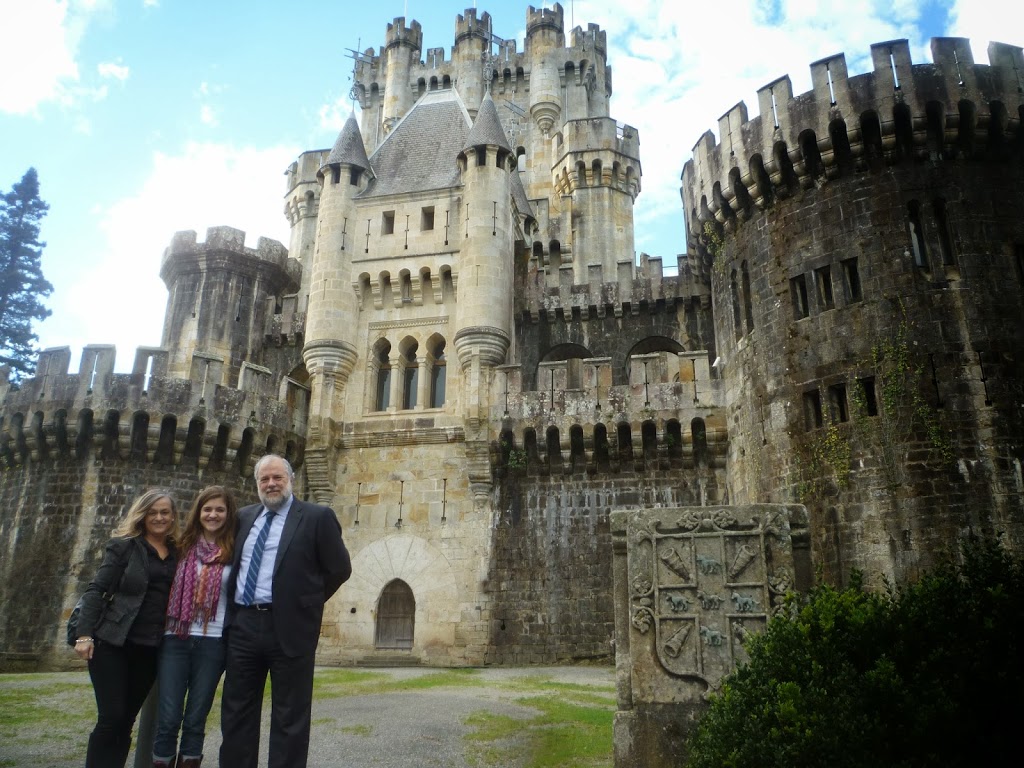 |
| Me with my hosts, day one of my trip |
The northern region of Spain is entirely different from the south where I live, in Alicante. First of all, their landscapes are entirely different: the north is a green paradise whereas the south is a seaside desert. The north also has an amazing variety, however: during my weekend there I drove alongside a river in the forest, admired snow-covered mountains, walked along beaches on the Cantabrian Sea, and drove through flat, open fields.
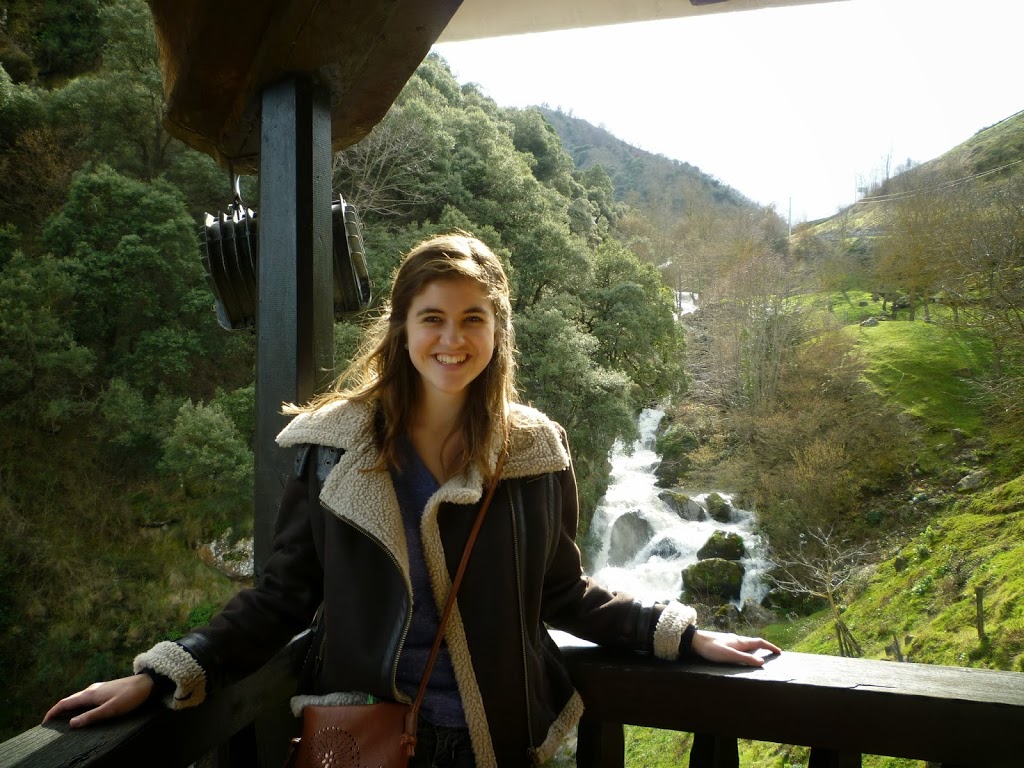 |
| Alongside the Rio Deva |
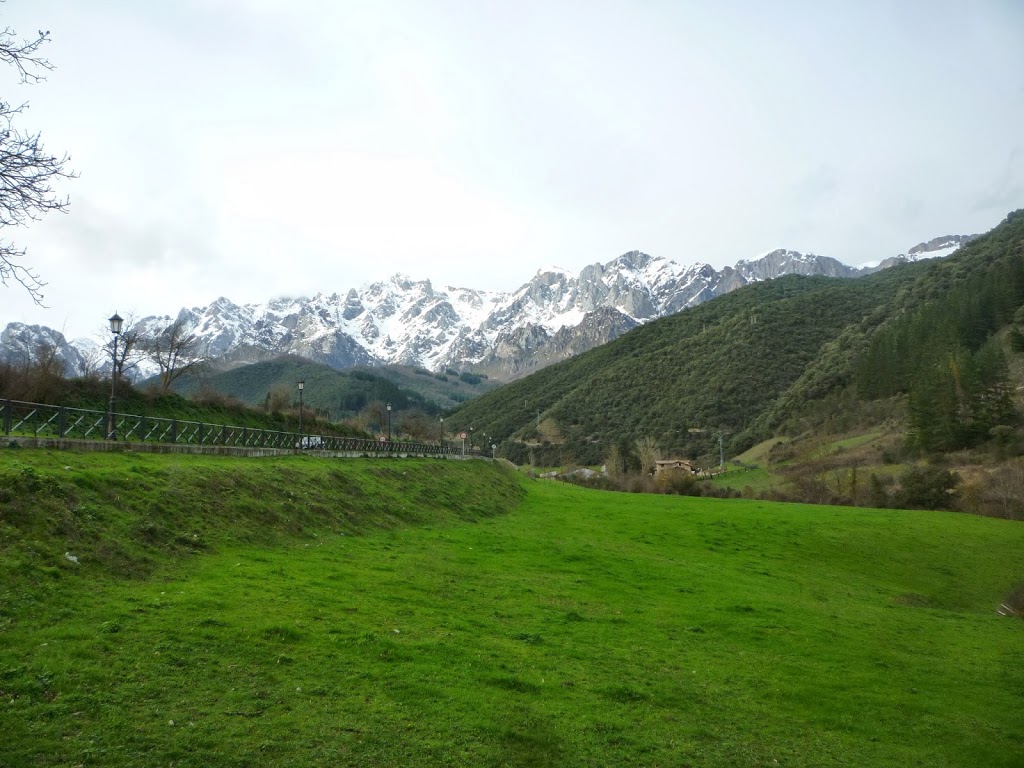 |
| The Picos de Europa, a mountain range in Cantabria |
 |
| Beach on the Cantabrian Sea in the town of Plentzia |
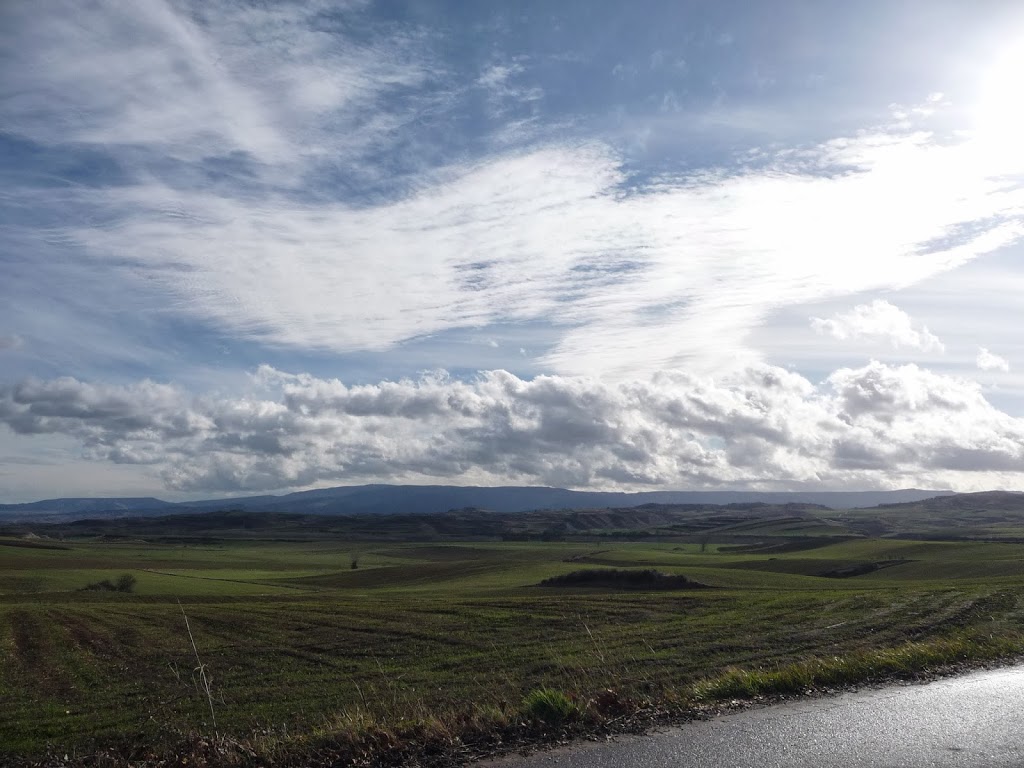 |
| Roadside view while driving in La Rioja |
Spain is made up of autonomous communties, like states in the United States, four of which I passed through during this trip: Pais Vasco, Cantabria, Asturias, and La Rioja. I spent the most time, though, in Pais Vasco (the Basque Country), which is home to the Basque people. This is a fascinating and mysterious culture. For example, their language, Basque (or Euskara) is a Pre-Indo-European language, not related in any way to the other languages surrounding it; the Basque people have preserved their language and their culture for centuries, withstanding the influence of the Romans and other peoples who occupied the Iberian peninsula over the years.
The Basque Country has also dealt with quite a bit of trauma in the past half-century. During the 36-year dictatorship of Francisco Franco, an terrorist group called ETA developed to organize armed resistance to the oppressive government. However, after Franco's death and the end of his dictatorship in 1975, ETA continued to terrorize the region with violence. Even as recent as ten years ago, a mentality of fear plagued the citizens of Pais Vasco. Hearing about this political conflict from my hosts and getting their first-hand perspective was fascinating after only having read about it in textbooks.
In addition to the incredible food for which the Basque Country is famous (see my previous blog post about food), the highlight of my weekend was seeing the astounding sites of interest in this region. Here are some of my favorites.
Monasterio de San Millan de la Cogolla
This gorgeous monastery is located in the green, hilly countryside of La Rioja and dates back to roughly the 5th century! It is made up of two different monasteries: el Monasterio de Yuso, which is large and grand, and el Monasterio de Suso, perched up on the mountainside overlooking the valley. Suso originated as nothing more than a cave, around which a group of monks built the simple but beautiful stone building. Yuso has been a thriving home and place of worship and work for monks for hundreds of years, and is home to the first written text in Spanish, which blew my mind.
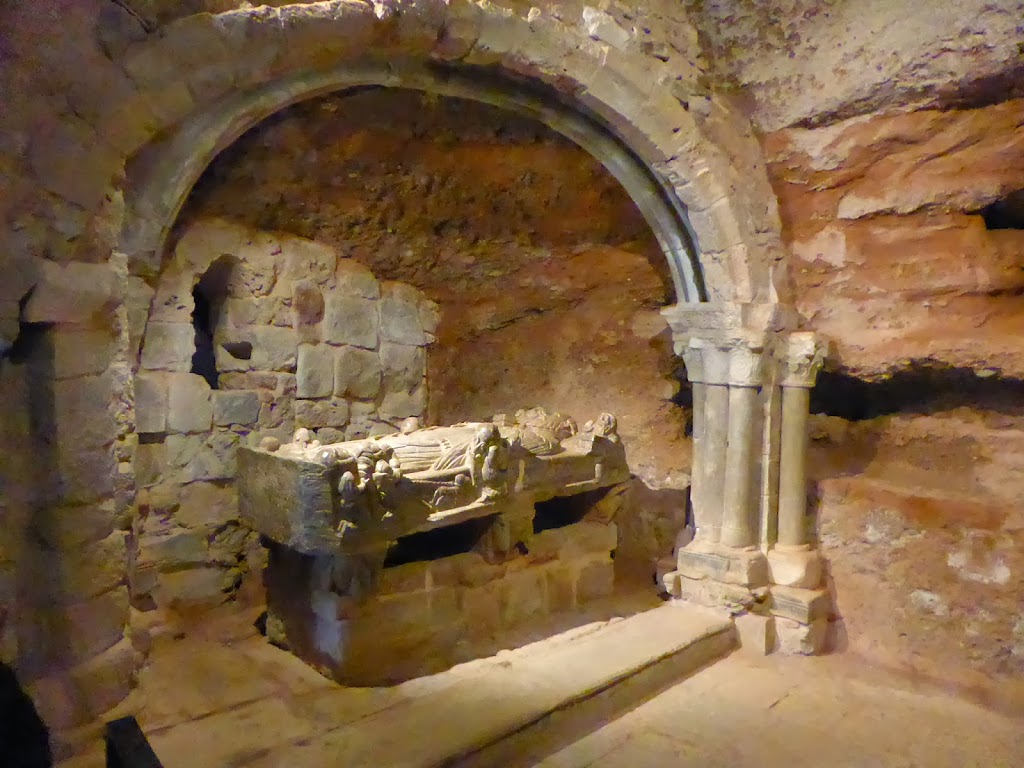 |
| The tomb of San Millan in el Monasterio de Suso |
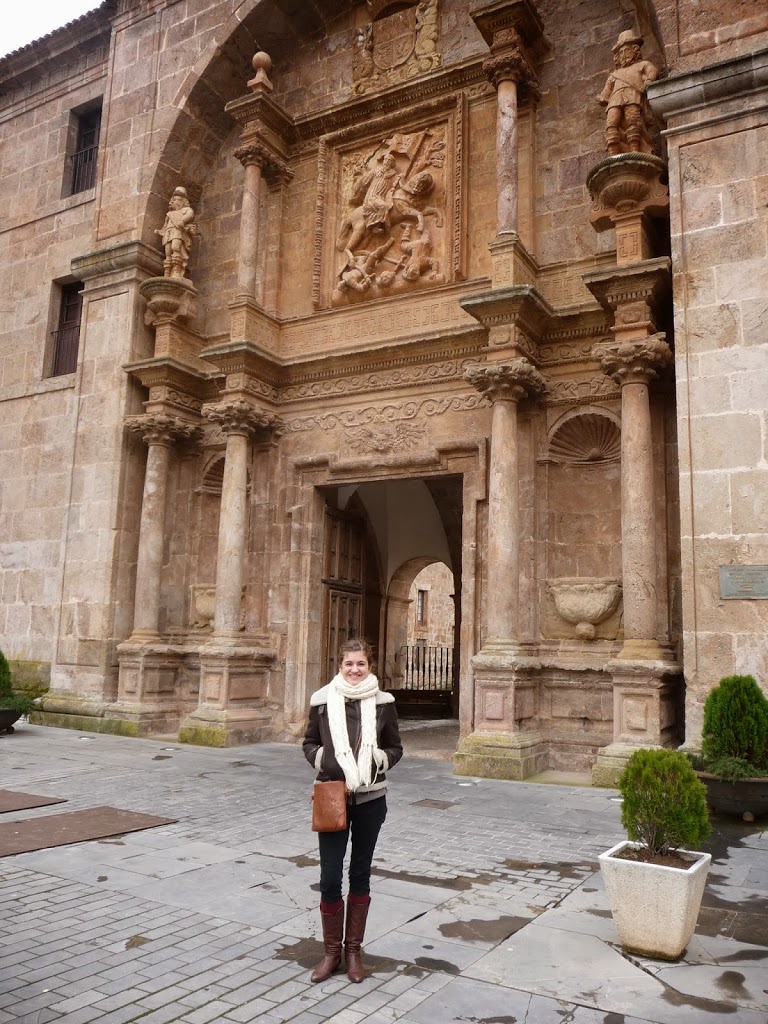 |
| Monasterio de Yuso |
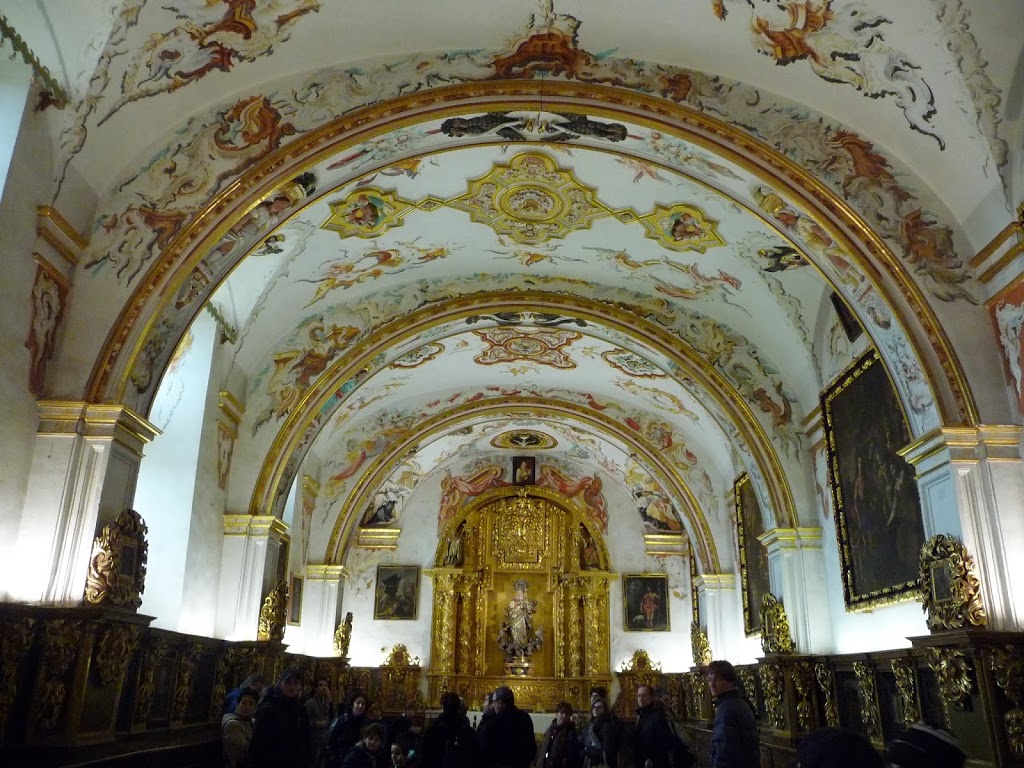 |
| Monasterio de Yuso |
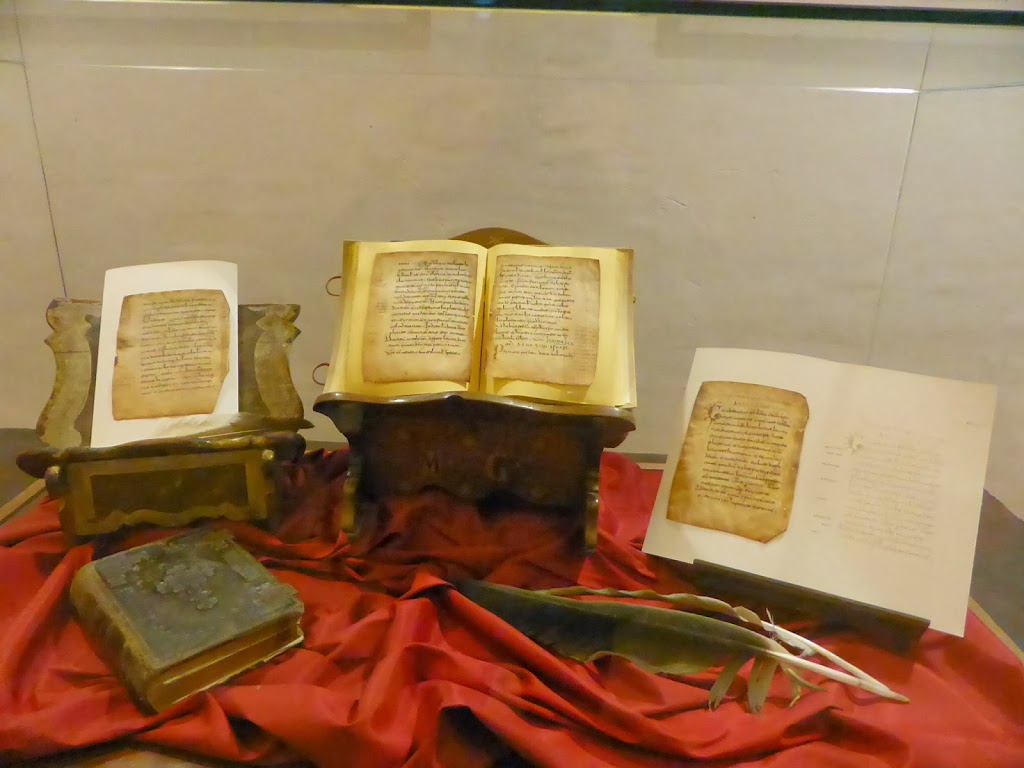 |
| The first written text in Spanish! One of the world's most-spoken languages originated as just some scribbles in the margins of this Latin book, written by an anonymous monk. |
Monasterio de Santo Domingo de la Calzada
This monastery, also located in La Rioja, has an interesting story behind it. According to legend, a wealthy family once came to visit the town of La Calzada, and the innkeeper's daughter fell in love with the son of the family. However, when he rejected her she framed him for thievery to get revenge. He was tried by the town magistrate, condemned, and executed. But when his grieving parents heard their son's voice saying that Santo Domingo had saved his life, they went to the magistrate, who was just sitting down to a chicken dinner, and said, "Our son is as alive as that rooster and hen on your plate." At that moment the rooster and hen leaped up and crowed. So the town is known as the place "donde cantó la gallina después de la asada" - where the chicken sang after it was barbecued! Because of this legend, a live rooster and hen are always kept in a hen house right there in the cathedral! (Don't worry, though, the birds are switched every month so as not to be inhumane.)
 |
| Monasterio de Santo Domingo de la Calzada |
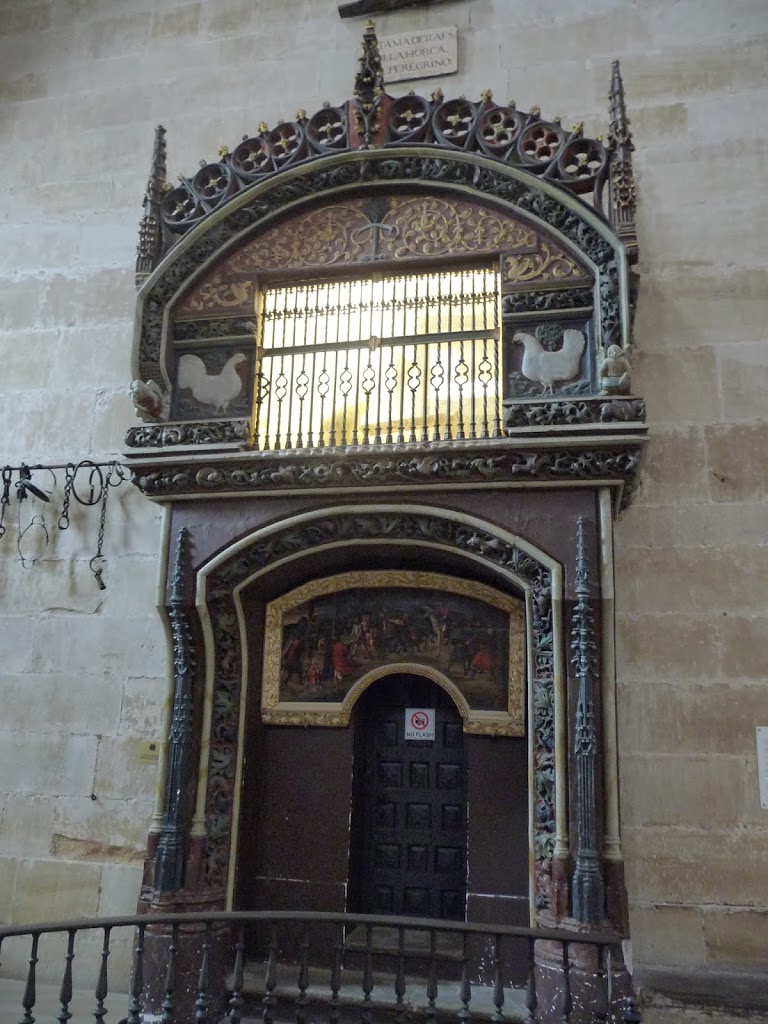 |
| El gallinero, where the live rooster and hen are kept in the cathedral |
Museo Guggenheim of Bilbao
This museum was built in 1997 and was a crucial turning point in the history of Bilbao. Before this time, Bilbao was a purely industrial city - highly profitable, but horribly polluted. My hosts, the Blancos, told me about growing up in Bilbao as it was then, saying it was a dirty, ugly, dying city. However, according to them, one of the few good ideas a politician has ever had in Spain was to build the Guggenheim museum. Miraculously, this art museum saved the city: politicians and citizens united to clean up their city, starting around the iconic museum and working their way outwards. The buildings, parks, and public places were renovated, culture began to flourish, and tourists began to pour into the area. Today, Bilbao is considered to be the cultural capital of Pais Vasco and is extraordinarily clean and aesthetically pleasing. For me, this is a really hopeful, triumphant story of how art had the power to transform a city.
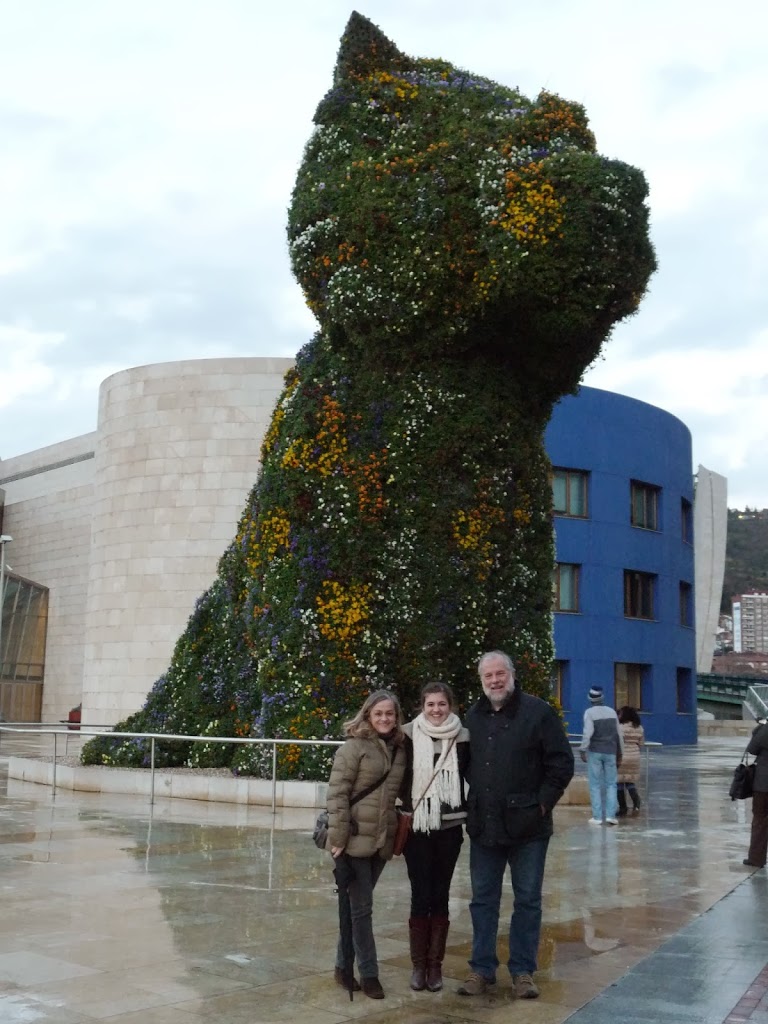 |
| The Blancos and I in front of the Guggenheim's famous Puppy, covered entirely with seasonal flowers |
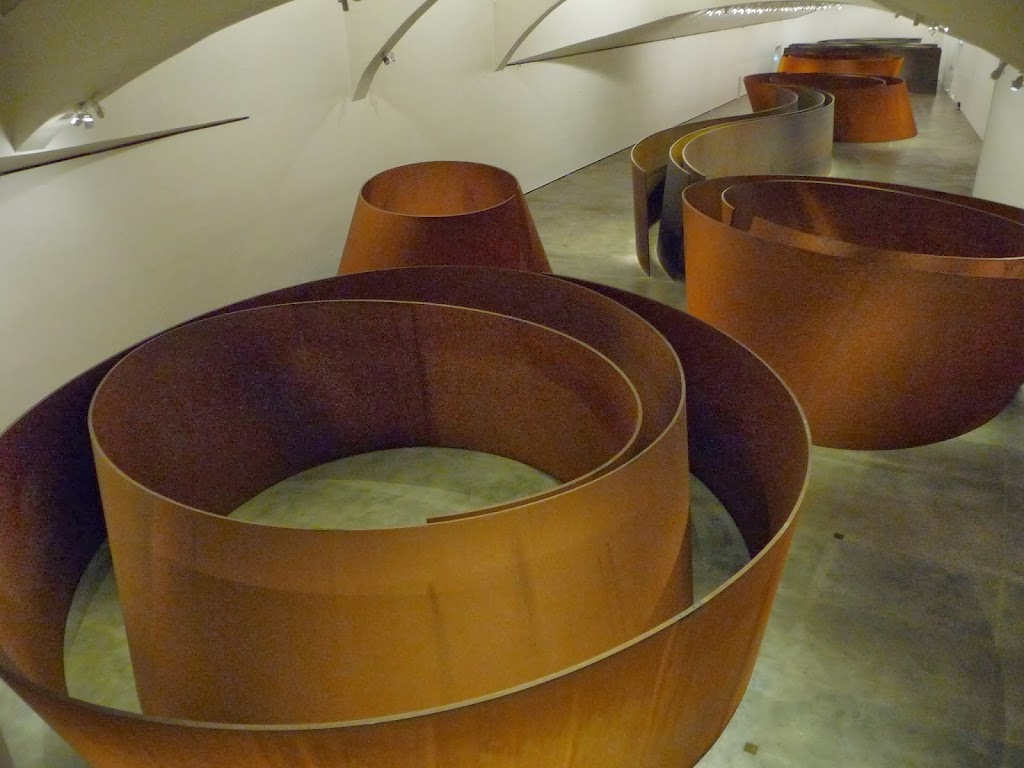 |
| A work of modern art: 30-foot high metal mazes! |
 |
| In the Guggenheim museum |
My weekend in the north of Spain has been one of the highlights of my study-abroad experience. This region is rich in beauty, history, ancient customs, and modern significance. Traveling there showed me the importance of being shown a place by natives of the area - not only do you learn a ton of first-hand information and perspectives, you also give back by showing interest in the homeland they love. At the end of the weekend, I asked the Blancos how I could possibly thank them for spending this amazing weekend with me. They replied, "Well, to thank us... return!" I certainly will!
Hillary Harder is the Spring 2014 CEA MOJO in Alicante, Spain. She is currently a junior at Goshen College.







